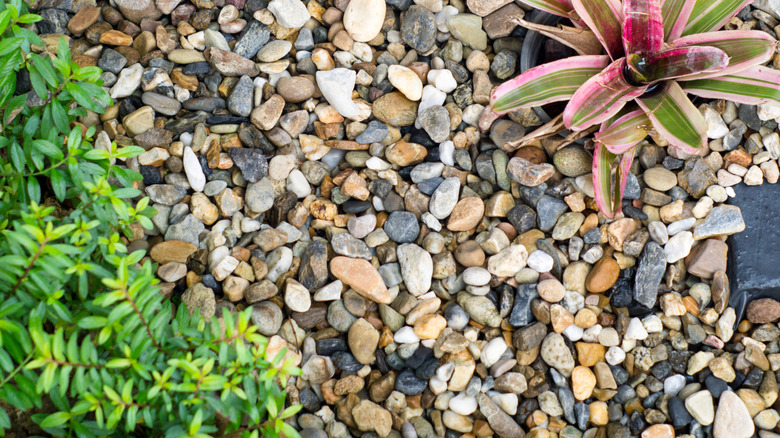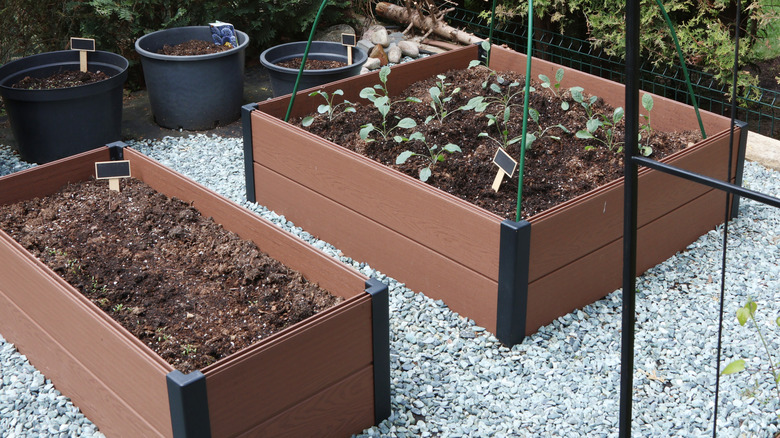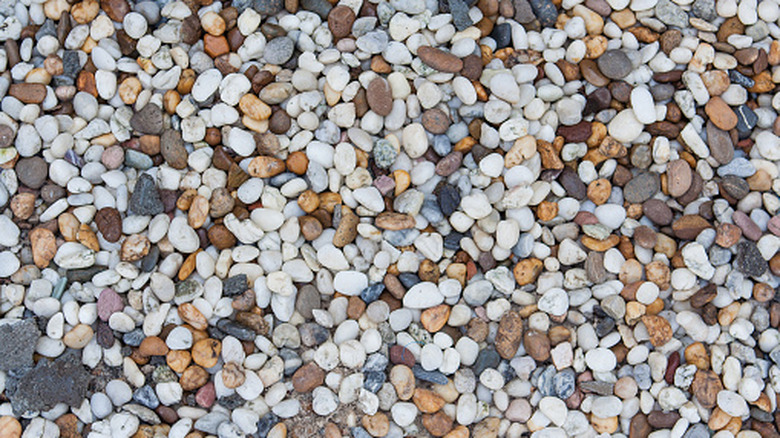How To Clean And Maintain Pea Gravel To Keep It Looking As Good As New
When your landscaping calls for a neat, serene look, you can't go wrong with pea gravel. When freshly installed, pea gravel has a tidy and minimal aesthetic that's ideal for Zen gardens, pathways, fire pits, and more. But "freshly installed" are the key words there. After a while, pea gravel can accumulate debris and overflow into the rest of the yard, which has the opposite impact. Keep your pea gravel looking as good as new with vital tools like a rake, leaf blower, tamper, and a border.
Pea gravel is a type of gravel that's made up of small round stones up to about a ½ inch in diameter. It's highly versatile and relatively low maintenance. It helps prevent weeds and discourage pests, which further adds to a naturally neat look. But one of the main downsides to using pea gravel is how messy it can get without upkeep. When leaves, sticks, and seed pods fall onto pea gravel, you can't just sweep them up like you would on a solid surface. The tiny stones also tend to wash away and spread easily, ending up everywhere from your sandals to your car. Luckily, it's not very difficult to prevent those mishaps and keep your pea gravel (mostly) in place and clean.
Use a rake and a leaf blower to keep pea gravel even and clean
Over time, your pea gravel will become slightly uneven, with depressed or bare areas where it gets the most foot traffic. Even the aggregate out with a rake every few days to keep it level. You can use a gravel rake or flip your regular rake over. You'll also need to replenish with another layer of pea gravel every four years or so, focusing on balder spots and tamping it down again.
Debris is also inevitable, especially if you have trees or bushes nearby. To clean pea gravel, use a leaf blower to remove loose debris, such as leaves and sticks from the surface. This is the only practical way to clean debris from pea gravel in a short span of time. You can also use a pressure washer to rinse dirt more thoroughly from the gravel; however, start with a lower pressure setting to avoid displacing rocks. A hose and stiff brush may also be effective but will take more time. Lastly, promptly remove any weeds that have broken through.
Cleanliness starts with proper installation
If you haven't installed the pea gravel surface yet, now is your chance to make sure that the aggregate will stay tidy and not end up all over your yard. When installing pea gravel, don't make the layer more than 3 inches deep — this helps prevent messy overflow while still maintaining a solid, walkable gravel surface. Install some type of border a ½ inch higher than the stones to keep your pea gravel from washing away or spreading. Stone or brick works well for edging and matches the pea gravel aesthetic. It's also helpful to install landscape fabric underneath your pea gravel; while the gravel itself prevents weeds, landscape fabric further blocks stray weeds from popping up and ruining the area.
After you finish adding the gravel, use a tamper tool, compactor, or lawn roller to pack it down tightly. This step helps smooth the surface and keeps the fabric beneath from showing through. A light spray with a garden hose will pack the gravel together even more and help settle each stone into place.


